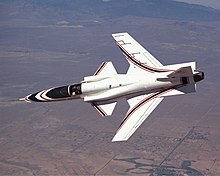






"Daca vrei sa construiesti o corabie, atunci nu aduna oamenii, pentru a cara cheresteau, pentru a-si pregati uneltele, pentru a le da sarcini, ci invata-i pe oameni ce inseamna dorul de marea nesfarsita" (Antoine de Saint Exupery) „When everything seems to be going against you, remember that the airplane takes off against the wind, not with it." (Henry Ford)













The Romanian Aerospace Association is a Romanian incorporated non-profit organization.
Here are some of the RAA's short and long term goals:
· To be a strong voice in the aerospace field of activity.
· To promote knowledge and uphold a high standard of knowledge and professional efficiency among aerospace enthusiasts.
· To closely cooperate with authorities and institutions concerned with aerospace training, industry and business.
· To sponsor and support the passage of legislation and regulations which will increase and protect the safety of air navigation, to promote safety.
· To support the way forward for a comprehensive air passenger right policy.
· To approach the small and large companies of the sector.
· To optimize resources and efforts.
· To serve as springboard to develop the training in the aerospace sector.
· To serve as negotiator and spoke voice to the various Administrations.
· To achieve a greater implementation of the air companies in the training of the own staff.
· To accomplish diffusion campaigns of the officially regulated courses to students in order to attract and get future training.
· To extend the acceptance capacity of the students.
· To arrange training courses in the facilities of the air companies.
· To improve the continuous training of the teaching staff.
Dear Aerospace Colleague,
The information you are about to read is for you - the RAA member - at the head of today's corporation (i.e., for the strategist, the leader, the motivator).
Now you can join a select group of professionals who have excellent experience and exclusive insights into theoretical and practical aerospace science. The aim of this unique gathering of expertise is to help you develop, implement and maintain effective strategies for survival and growth in increasingly competitive markets. Of course globalisation, e-commerce and lightning speed of change have revolutionised the aerospace business world tremendously. For today's senior manager, effective strategic thinking is the difference between company success and failure.
I invite you to cooperatively find out how to:
· Create a corporate culture that encourages innovative strategic thinking and values the experience of more conventional planners/strategists.
· Overcome resistance to change and get your whole company behind new strategies when they are agreed.
· Evaluate the benefits and risks of strategic alliances and joint ventures.
· Make your strategy more flexible - so changes can be agreed and implemented more easily.
· Build a strategy that encourages knowledge management and information exchange and enables all employees to access your corporation's "collective brain".
· Involve all core functions in the strategy-planning process.
· Build strategies that maximise stakeholder value.
· Get managers to think and act strategically.
· Re-shape your organisation's hierarchy, business process and use of teams.
· Gather and use competitive strategic intelligence ethically, but effectively.
The aim of the RAA is to give you FREE networking and information service with your membership.
I'm convinced you'll come to depend on RAA for more guidance on how to create and implement effective strategies for your company's survival and growth. Reserve your application form today!
Yours sincerely,
Doru Vârlan
P.S. Strategic Direction is one of the most exclusive (and most expensive) strategy briefings project the RAA aims to get alive. I do hope you will try it for yourself.
Niciun comentariu:
Trimiteți un comentariu